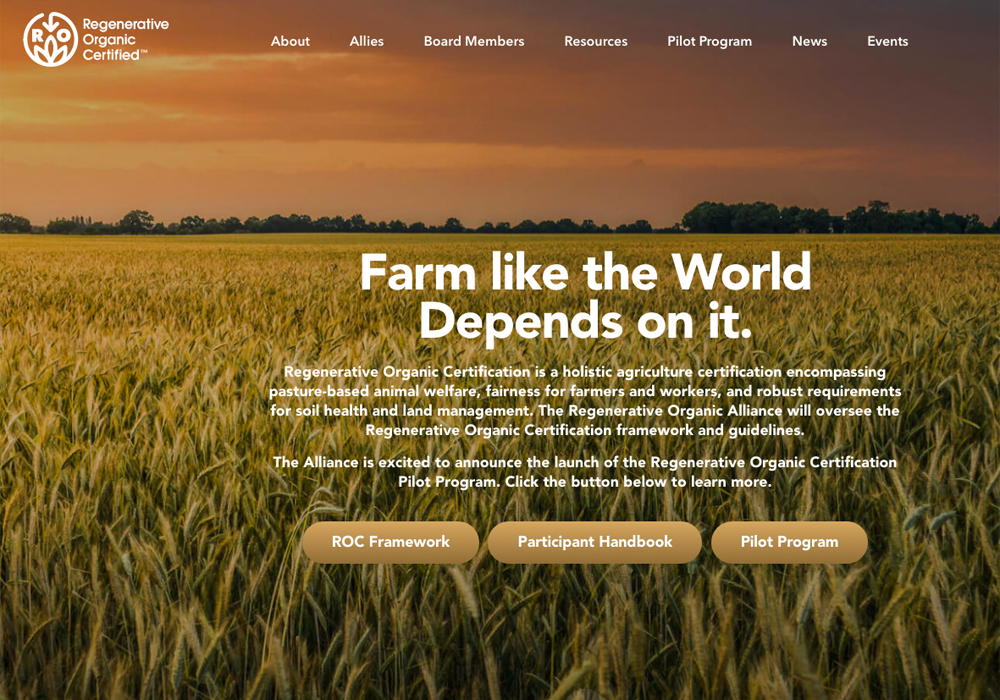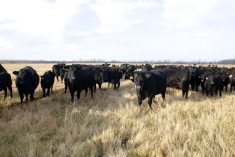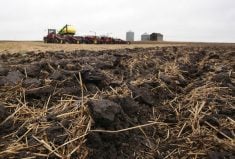The Regenerative Organic Certified standard was created in the U.S. partly as a way to deal with tillage in organic farming
Regenerative Organic Certified is a mouthful and possibly a bit confusing.
But the standard and its brand, an R and an O in a circle with an arrow pointing to a plant, could become a familiar logo on grocery store shelves.
The Rodale Institute, an organic research group based in Pennsylvania, created the RO label a couple of years ago because some of its leaders thought organic farming had become “static.”
“Organic is a fairly static standard. Once you become certified, you’re in the club and there’s no incentive to move beyond that or continuously improve,” Jeff Moyer, the institute’s executive director, told Civileats.com.
Read Also

Farming Smarter receives financial boost from Alberta government for potato research
Farming Smarter near Lethbridge got a boost to its research equipment, thanks to the Alberta government’s increase in funding for research associations.
Regenerative agriculture is a set of practices that improves soil health and increases productivity by using cover crops, minimal tillage, permanent land cover and integrating livestock into the farm.
The RO standard addresses one of the main criticisms of organic agriculture — excessive use of tillage. For years, proponents of zero tillage have argued that soils on conventional, no-till farms are healthier and more productive than organic farms because tillage degrades the soil.
The Regenerative Organic standard doesn’t prohibit the use of tillage to control weeds, but it does limit the amount of tillage.
Stuart McMillan, who manages an organic farm near Kamsack, Sask., said the RO standard is much broader than reduced tillage.
“It’s a fairly ambitious set of requirements, (which) actually sets tiers of accomplishments. You could be bronze, silver and gold (for tiers).”
McMillan, who worked as an organic inspector for many years, is managing the 5,000 acre farm for Nature’s Path, the breakfast cereal and organic food company with offices in Richmond, B.C.
The farm is the only Canadian operation that’s part of the Regenerative Organic pilot project — a group of farms following the RO standards.
McMillan isn’t convinced that zero till producers have healthier soils than organic farmers, but he did say reduced tillage is important for soil productivity.
“I would agree that trying to minimize our tillage passes, or any disturbance of our soil, is a good goal. It’s a good goal for any farm,” he said.
“The principles and the practices (of regenerative) will allow us to build healthier soils, and as a result be more profitable in the long run.”
The RO standards are set up to encourage continuous improvement. For instance, the bronze level says “tillage should be infrequent and should occur only when necessary.”
At the gold level, tillage on annual crops is permitted once every three years.
McMillan plans to reduce tillage on his farm, but he understands that tilling once every three years may not be manageable on an organic farm in eastern Saskatchewan.
The RO standard also encourages producers to incorporate cover crops and follow a more complex crop rotation.
However, the rules are not absolute. Certain practices, such as planting a cover crop in the fall, don’t work if it snows two days after harvest.
“Including cover crops on all land, twice in a season, in my mind that’s feasible if I was farming in Missouri,” McMillan said.
“But not necessarily feasible in North Dakota or the Canadian Prairies.”
Livestock is another example of an optional practice. Having cattle or grazing animals is optional at the bronze level, but rotational grazing is mandated at the silver and gold tiers.
“It is suggested but it’s not required. We don’t have any livestock,” McMillan said.
Improving soil health is one of three components of regenerative organic. The other two are about improving animal welfare and enhancing social fairness.
Americans created the RO model and Europeans have developed a similar set of requirements to take organic farming to the next level.
The International Federation of Organic Agriculture came up with the concept of Organics 3.0 several years ago.
Organic leaders in Europe were concerned that the practice would remain a niche part of agriculture because the growth of organic production has been slow.
“Even if the current growth of five percent per year is sustained until 2050 … the impacts of organic agriculture would remain insignificant with respect to the movement’s goal of reducing the adverse impacts of agriculture on the planet’s ecosystem,” the Organic Council of Ontario said on its website in January.
To avert that future, Organics 3.0 is “about bringing organic out of its current niche into the mainstream (of agriculture),” IFOAM says.
Put another way, Organics 3.0 is about broad adoption of more sustainable methods.
“I think we could start seeing some of these (regenerative) practices being implemented on all farms,” McMillan said.
“Maybe not all practices on all farms, but (maybe) each farm finds (something) that is suited for them.”


















